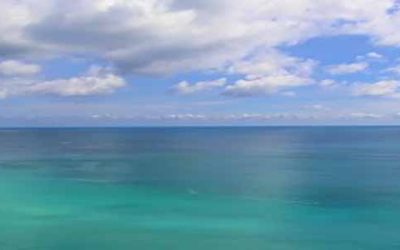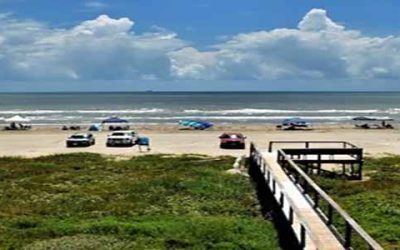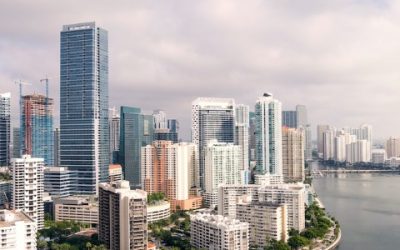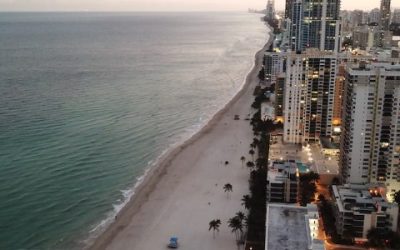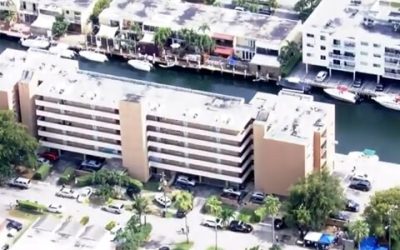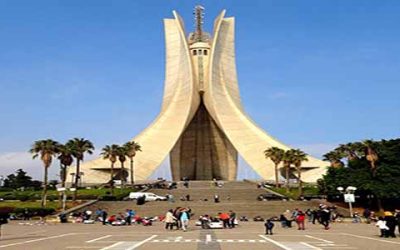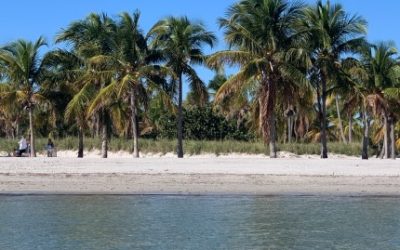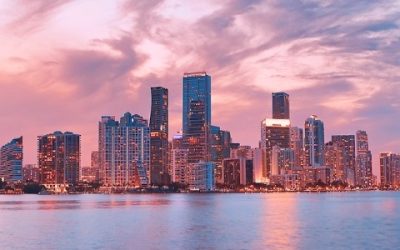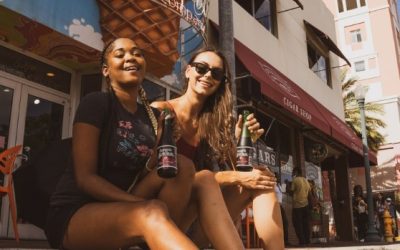Miami Neighborhood Guide
An introduction to the city of Miami in South Florida. Includes information for both visitors and residents. See also our Miami-Dade County and Greater Miami travel guides.
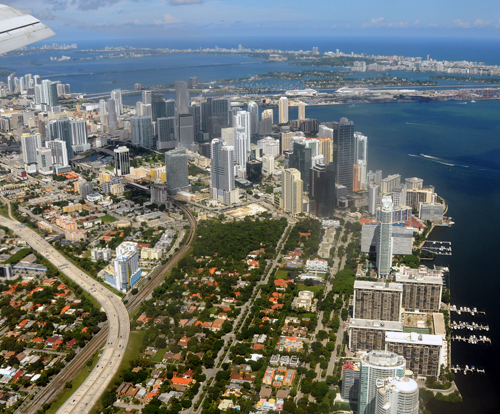
Downtown Miami, Florida, aerial view from an airplane
Spend a little time in this section of the site and you will get a feel for how the city breaks down. A little time here and you will be surprised how much easier you will get around Miami.
Sunny Isles – Miami neighborhoods
Sunny Isles Beach Contents Sunny Isles Beach An Ideal Vacation Destination Lodging Activities Dining Entertainment Sunny Isles Beach, the City of Sun and...
Surfside – Neighborhoods Miami Beach
Visit Surfside, Florida Contents Visit Surfside, Florida Exploring the Beach Trying Out Local Cuisine Checking Out the Town Living in Surfside, Florida The...
Eastern Shores – Neighborhoods North Miami Beach
Eastern Shores, a prestigious area of North Miami Beach, is located a 2 minutes drive from the beach, 5 minutes from Bal Harbor and Aventura, and 15 minutes...
Hallandale Beach
City of Hallandale Beach Contents City of Hallandale Beach Visiting Hallandale Beach Getting There Accommodation Things to Do Food and Drink Safety...
North Miami – Neighborhoods North Miami Beach
North Miami Guide North Miami is a city located in northeast Miami-Dade County, Florida, United States, about 10 miles (16 km) north of the City of Miami....
Monument of Martyrs
In Cuban Miami stands a greatly cherished monument dedicated to the botched Bay of Pigs Invasion that took place close to 50 years ago. The Monument of...
Key Biscayne – Miami Neighborhoods
For anyone visiting Miami Beach for the first time, a day trip over to Key Biscayne is well worth the effort. Key Biscayne is a tiny barrier island off to...
Miami Beach Visitors Guide
City of Miami Beach Contents City of Miami Beach Under the Tropical Miami Beach Sun Art Deco South Beach Information for visitors to Miami Beach, Florida...
Little Havana – Miami Neighborhoods
As you can figure out from its name it’s a representation of Cuba in Miami. Little Havana is a very Cuban part of the city that has a lot of charm and...
As an overview to the city, let’s break it up into a few main areas.
- Design District
The Miami Design District, a unique, 18 square block ‘community of design’ just north of downtown Miami, and ten minutes from South Beach and the airport, is fast becoming the center of the home furnishings and interior design industry in South Florida. - Downtown Miami Busy
City downtown area with Restaurants, Bars, Bayside Marketplace, Dade County Cultural Center, and American Airlines Arena. - Key Biscayne
Miami’s first islands in the Florida Keys. Try Hobie Beach if you are into jet-skiing. - Little Havana
A taste of Cuba. This Artist community has many galleries and inexpensive restaurants. Give it a try – authentic cuban cuisine! - Coconut Grove
An artists community with many cafes, boutiques, and nightspots – College town. - Southern Miami/Dade County
Area contains some of the city’s attractions, such as zoos, aquariums, outdoor activities. - Coral Gables
Top hotel’s and restaurants located in this upscale area – golf courses bars and good shopping. Many buildings and districts of Coral Gables are meticulously preserved as historic landmarks - Miami Beach
Great hotels, bars and restaurant’s. Try Surfside and Sunny Isles area for affordable places to stay. You can find plenty of bars and clubs on Collins Avenue and Washington Avenue. Bal Harbour Shopping offers upscale fashion. - South Beach
South Beach beach is one of the greatest beaches in the world. Upscale nightlife nightlife, fabulous Art Deco Architecture, and miles and miles of beaches. The Place to be! The Art Deco District in South Beach has about 800 buildings, near Dade Blvd at the North & 6th Street at the South.
Bal Harbour
North of Miami Beach, the affluent neighborhood of Bal Harbour is home to elite shops, dining, and hotels – but also uncrowded stretches of beach and open waters.
Coral Gables
Coral Gables remains a distinct Miami area urban community that combines old-world style and new world inventiveness. Southwest of Miami you will find Coral Gables (the Gables) one of the first planned communities in the ’20s. It was designed by George Merrick with an architecture that is almost entirely Mediterranean with wide tree-lined boulevards. To get to Coral Gables take the Miracle Mile SW 22nd St. You will find high-end department stores very good restaurants, gourmet shops, and Bridal Shops. There is now a new free trolley system that makes the area very pedestrian-friendly. Wrapping its broad wings around the southern end of De Soto Boulevard, Merrick’s crowning achievement was the fabulous Biltmore Hotel
MiMo – Miami’s Upper East Side District
With its Biscayne Blvd. retro Fifties architecture, shopping, and dining venues, the Miami Modern upper east side district has become an insider’s favorite.
Districts of the City of Miami
Allapattah District of Miami
The Allapattah District is located in the center of the City of Miami, just north of State Road 112. In the past, it was known as “Railroad Shop Colored Addition”. In 1947 black families were forcibly evicted from this area through eminent domain to make room for homes, schools, parks, and other facilities for white families. Today Allapattah is again predominantly black.
Bay Point Estates District of Miami
An introduction to the Bay Point Estates District of the city of Miami Florida. It is bounded by Northeast 41st Street, Northeast 50th Street, and Biscayne Bay. There are about 250 homes in the community and all homeowners pay expensive homeowners association dues to cover the cost of 24-hour security, road maintenance, and other amenities. Bay Point Estates is am expensive gated community fronting Biscayne Bay in Miami’s upper east side. Homes range in price from about $1 million to $9 million. homes range in size from 3000 to 8000 square feet3,536 to 7,758 square feet. typically cost 1 million to 9 million dollars
Brickell
Brickell Key
Coconut Grove
Coral Way District of Miami
The Coral Way District is located in the southern area of the City of Miami.
Downtown Miami
The district known as Downtown Miami is located in the east-central part of the city of Maimi. It includes most of the islands in the bay, Miami’s central business district, and the Brickell Financial District. More like Buenos Aires than Boston, it’s perhaps DOWNTOWN MIAMI that shows the city at its most Latin. Downtown divides into distinct halves: big business and big buildings line Brickell Avenue south of the Miami River, while the commercial bazaar around Flagler Street to the north hums with jewelers, fabric stores, and cheap electronics outlets. Latin culture is comfortably dominant here – from office workers grabbing a midmorning cafecito, or Cuban coffee, from tiny streetside cafés to the bilingual signage in almost every store. If at first, it may seem overwhelming, persevere: downtown is compact, holds two of Miami’s best museums, and provides the clearest idea of Cuba’s continuing influence on the city.
Flagler Street is downtown’s loudest, brightest, busiest strip; at its western end is the Metro-Dade Cultural Center, an ambitious attempt by architect Philip Johnson to create a postmodern Mediterranean-style piazza. Art shows, historical collections, and a library frame the courtyard, but Johnson overlooked the power of the south Florida sun: rather than pausing to rest and gossip, most people scamper across the open space toward the nearest shade. The center’s Historical Museum of Southern Florida at 1010 W Flagler (Mon-Wed, Fri & Sat 10am-5pm, Thurs 10 am-9pm, Sun noon-5pm; $5, $6 combination ticket with Center for Fine Arts) provides a comprehensive peek into the region’s history. It has a strong section on refugees and immigration since 1960. A few yards away, the Miami Art Museum of Miami-Dade County houses a strong collection of post-1940 art and showcases outstanding international traveling exhibits (Tues-Fri 10 am-5 pm, third Thurs each month 10 am-9 pm, Sat & Sun noon-5 pm; $5, $6 combination ticket with Historical Museum; tel 305/375-5000).
Beside Biscayne Boulevard (part of Hwy-1), on the eastern edge of downtown, is the Bayside Marketplace, a large pink shopping mall enlivened by street entertainers and food stands. Across Biscayne Boulevard, the Freedom Tower, built in 1925 and modeled on a Spanish bell tower, earned its name by housing the Cuban Refugee Center in the 1960s. Between December 1965 and June 1972, ten planes a week brought over 250,000 Cubans allowed to leave the island by Fidel Castro. While US propaganda hailed them as “freedom fighters,” most of the arrivals were simply seeking the fruits of capitalism, and, as Castro astutely recognized, any that were seriously committed to overthrowing his regime would be far less troublesome outside Cuba.
Fifteen minutes walk from Flagler Street, the Miami River marks the southern limit of downtown. Around 1900, the millionaire oil baron Henry Flagler extended his railroad, which had opened up Florida’s east coast, to reach Miami from Palm Beach. His Royal Palm Hotel (on the site of today’s Hotel Inter-Continental ) did much to put Miami on the map. One of the landowners was William Brickell, who ran a trading post on the south side of the river, an area now dominated by Brickell Avenue – the address in 1910s Miami. While the original grand homes have largely disappeared, money is still the avenue’s most obvious asset: its half-mile parade of bank buildings is the largest grouping of international banks in the US. The rise of the banks was matched by new condominiums of breathtaking proportions (and expense) but little architectural merit.
Flagami District of Miami
The Flagami District is located on the western edge of the city of Miami. It is the area bounded by Flagler Street, the Tamiami Trail, 57th Avenue (Red Road) and 77th Avenue.
Jewelry District of Miami
Liberty City
Little Haiti District of Miami
The area known as Little Haiti is a district in the north-central part of the city of Miami.
Little Havana
MiMo District of Miami
On June 7, 2006, Miami’s Historic Preservation Board voted unanimously to create a new historic district to protect a neighborhood of 1950’s motels and other “Miami Modern” buildings in a 30-block section of Biscayne Boulevard. The MiMo District will include the buildings along Biscayne Boulevard between Northeast 50th Street to Northeast 77th Street. The new district includes more than 50 “architecturally significant” buildings, many built in a style known as “Miami Modern” that appeared after World War II
Overtown District of Miami
The Overtown District is located in the center of the City of Miami. It is bounded on the south by Northwest 5th Street, on the north by Northwest 20th Street, on the west by northwest 10th Avenue, and on the east by the FEC Corridor and Northwest 1st Avenue.
Upper Eastside District of Miami
Watson Island in Miami
Watson Island is a diamond-shaped, 87 acres, a man-made island in Biscayne Bay. It is connected to Downtown Miami and the South Beach neighborhood of Miami Beach by the MacArthur Causeway. The island is most well-known for being the home of the Miami Children’s Museum, the Jungle Island Theme Park, the Miami Yacht Club, the Miami Outboard Club, the Japanese Gardens, and a seaplane base.
Morningside District of Miami
The Morningside district is located on Miami’s Upper Eastside near the neighborhoods of Bay Point, Belle Meade, Bayside, Palm Bay, and Shorecrest. All of these districts are within walking distance of Biscayne Bay.
Miami Metro Area
The Miami metropolitan area is by far the most diverse city anywhere on the eastern sea border. This city has long been a melting pot for immigrants from all over Latin America.
In the last census over 48 different countries were represented in Miami. People from Columbia, Brazil, Valenzuela, Peru, Nicaragua, Honduras, Guatemala, Cuba, Jamaica, Haiti, Trinidad & Tobago, Dominican Republic, Bahamas, Barbados, Guyana, and many more have set up homes in Miami and are taking big part in sharing their culture with tourists.
Miami isn’t just a mix of international residents either. People from all over America come to Miami to retire or they came for a visit and decided this was the place that they wanted to be. There are a documented 5 million plus residents squeezed into this little South Florida region, but the funny thing about it is only half of them actually speak the same language.
On average, 53% of Miami residents actually speak good English. The other 47% speak Spanish, Creole, French, German, Hebrew, Portuguese, or some other foreign language dialect. That’s an amazing amount when you think about the fact that this is just one small part of Florida with all of these different languages and cultures stuffed into one metropolitan area.
So that brings around the question of housing for all these people. South Florida has a total of around 2.3 million housing units right now. This helps people to understand why this record-breaking building boom is going on throughout the area. Shortage of housing is definitely a problem when you are dealing with a population that is growing each year at an alarming rate.
How many people can Miami honestly fit into this tiny nook of Florida? The answer was solved a few years ago when the first new skyscrapers began construction. Since the area didn’t have the land to expand any further outwards, the Miami-Dade County board decided that it was best to expand upwards.
This idea is obviously working out as planned because most of the residential skyscrapers that have been completed have already sold out of all of their units. Even the buildings that are still under construction are 70% or more spoken for and they aren’t set to be completed for another year or two.
In just three short years, Miami changed from a retirement village to a posh and chic city. The plans that this city has laid out for itself over the next 10 years will definitely be something that will be listed in the history books to come.
Recent Posts
-
Discover Unity and Culture at Many River Festival
-
Explore Miramar, Florida
-
Miami Kids Activities
-
Sunny Isles – Miami neighborhoods
-
Surfside – Neighborhoods Miami Beach
-
Miami Animals
-
Eastern Shores – Neighborhoods North Miami Beach
-
Hallandale Beach
-
Best Places to Swim with the Dolphins in the Florida Keys
-
Bayside Miami
-
Miami Marinas
-
North Miami – Neighborhoods North Miami Beach
-
Torch Of Friendship Miami
-
Port of Miami in Biscayne Bay
-
Villa Versace Miami
-
Four Seasons Hotel Miami
-
Miami Art Museum
-
Holocaust Memorial Miami Beach
-
Ocean Spray Miami Beach Hotel
-
Monument of Martyrs

